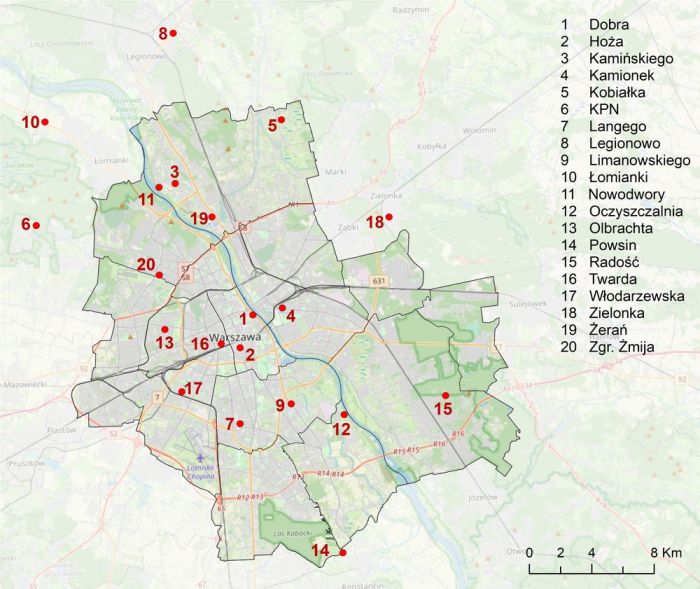Climate Research Department
MONITORING NETWORK
Warsaw and its vicinity (air temperature and humidity monitoring network)
The first microclimatic measurement network, consisting of 10 loggers in 8 different spatial development units, was operating in the years 2001-2002. In 2006, the microclimatic network resumed its operation, and finally, since 2007, measurements of air temperature, humidity and precipitation were carried out in Warsaw and its vicinity at 20 sites: 8 of them were located in Warsaw itself, in various urban units, while 12 spots were in peripheral locations. In years 2008-2010, the network was expanded in the frames of the project implemented jointly with the Warsaw University of Life Sciences: “Assessment of the biologically active areas indicator as a standard for shaping the spatial structure of residential areas” (project of the Ministry of Science and Higher Education No. N527 0669 33). As a result, another 18 stations for thermal and humidity measurements were added in Warsaw housing estates, some of which were closed after the end of the project. There were a total of 27 measuring points in the entire 2009-2018 period, while from 2019 the network was reduced to 20 spots.
HOBO automatic air temperature and humidity loggers have been installed in all locations (initially at 1.5 m high, over time raised to 2 m above the ground). The sampling time is 10 seconds and 10-minute averages are recorded. Data reading from the loggers is made approximately every 3 months.
For many years, the precipitation measurement network was also in operation, consisting of 8 Hellmann rain gauges and 2 autonomous HOBO rain gauges. The rainfall totals was measured at 10 sites: 2 within the city (Kamionek, Białołęka) and 8 in the surrounding towns (Błonie, Mińsk Mazowiecki, Radzymin, Sulejówek, Tłuszz, Wołomin, Zalesie and Zielonka). There are currently 4 precipitation stations left.
Data from the micrometeorological network form the basis for projects, scientific articles and expertises on the city's climate.

